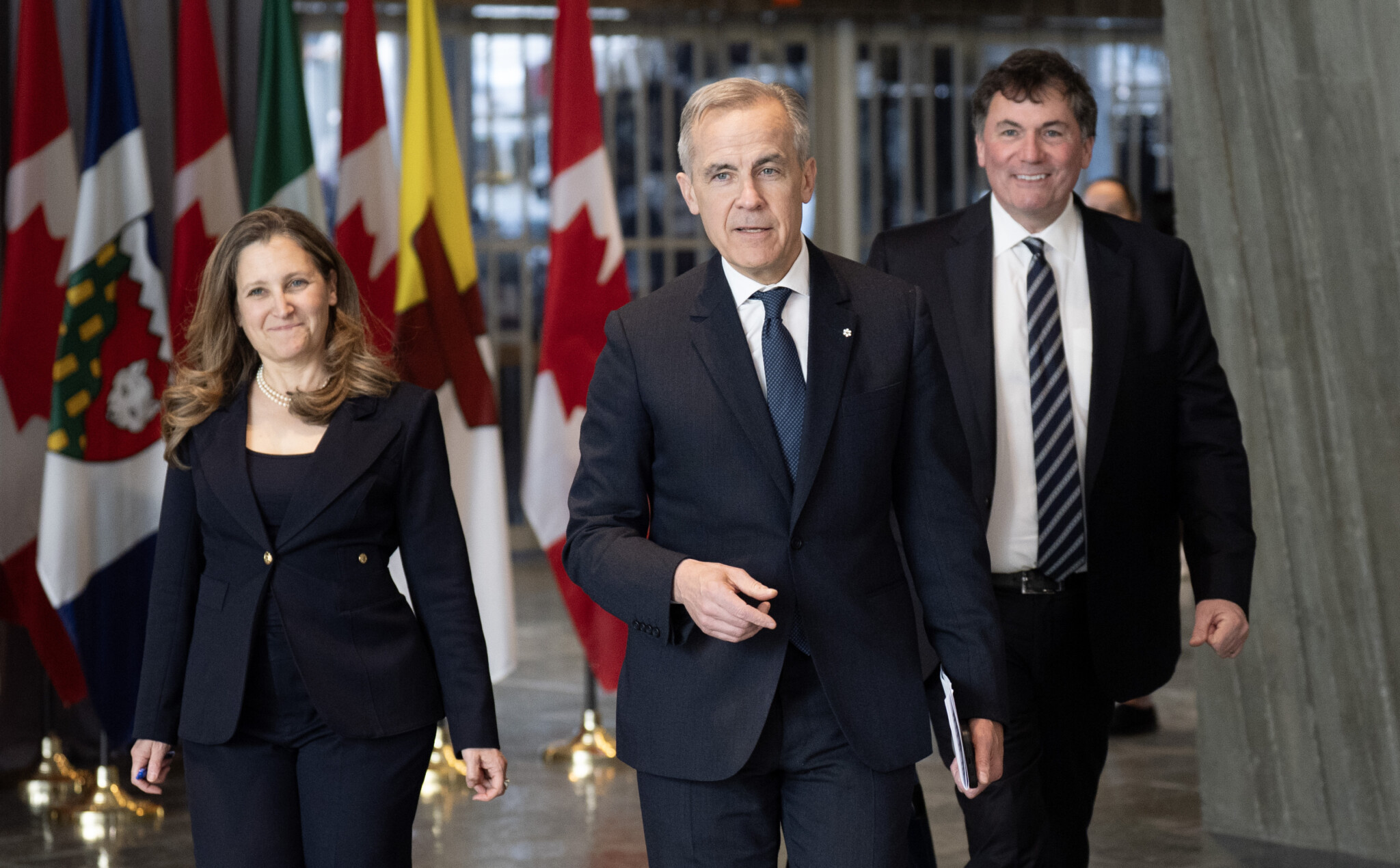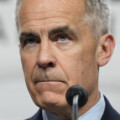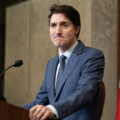From the beginning of his rapid and virtually unimpeded entry into Canada’s seat of power, Mark Carney’s reception has focused heavily upon the idea of Mark Carney. Indeed, there is something almost postmodern about the nature of his appeal: the average Canadian voter knows very little about his tenure with the central banks of Canada and the U.K. (or, for that matter, just what a central bank does). What mattered was his ability to reflect an image of sobriety and prudence—and his demeanour made for a particularly stark contrast with the pageantry of his immediate predecessor.
But while image is an undeniable component of political leadership, it cannot replace substantive policy, and the policies of the Liberal government, now in its fourth consecutive term, have brought the country to an impasse. And part of Carney’s somewhat paradoxical appeal to voters was that of a man preparing to put out fires his own colleagues had helped set.
Carney himself has plausible deniability here, having been uninvolved with the party or even the country during much of that time. Nonetheless, this is a parliamentary system, and the primary effect of this most recent round of elections was to return the same party that had set these fires to power.
The question then is not whether Carney is a capable and intelligent public servant (particularly in contrast to his predecessor), but whether he has the will and the capability to override or redirect his party on a host of important issues. For it must be emphasized that while Carney’s claim to authority is largely technocratic, the problems Canada faces are not primarily technocratic ones. That is to say, the trouble is not one of identifying the correct technical fixes to problems on which there is otherwise a consensus, but rather one of establishing a reasonable consensus that these are, in fact, problems in the first place.
Here, then, are just a few of the major substantive questions the incoming government must answer:
Immigration
Is the provisional cap on temporary residents commensurate with the relevant challenges posed by immigration?
It has been the party’s policy until very recently to inundate the country with newcomers across a variety of categories, while shredding the longstanding strategic criteria for entry. Fully 98 percent of Canada’s present population growth is due to immigration. These numbers vastly exceed the infrastructural capacity to receive them when it comes to housing, transportation, medical care, and other public services, and this pressure is especially acute in major municipal areas like Toronto, Vancouver, and Montreal.
The basic problem is that any scaling back at this point will appear moderate, but 50 percent of an insane policy is still an insane policy. What is the substantive basis for capping it at 5 percent—i.e., 2 million people—and not lower?
Further, what guarantees do we have that the government won’t evade its own metrics by transitioning temporary residents to permanent ones, in a kind of statistical shell game that does little to alleviate the pressures of overpopulation?
Finally, there is no mention at this point of deportation. What approach will be taken for recent migrants and temporary residents who commit crimes, engage in political activities on behalf of foreign states, or were found to have lied on their applications?
Getting this question right is of grave importance, as a number of political and practical problems—from housing to crime to foreign political interference are downstream from this one.
Energy
What will be the government’s policy on its vast and abundant energy resources?
For a decade now, the Canadian government has committed itself to a policy of “Net Zero”—that is, reaching a point where the country’s total carbon emissions are net zero. This is a tall order for an energy giant, and as the reality of green technology has yet to meet the hopes its proponents hold out for it, the default solution here has been to cut or penalize the country’s carbon output, largely at the expense of consumers.
These, in turn, have created significant tensions between federal and provincial governments, with Alberta now floating the possibility of secession. In other words, as with the other major questions this government faces, how they address this issue will have knock-on effects throughout other areas of Canadian politics.

Canada 2020 Advisory Board Chair, and former Governor of the Bank of Canada and Bank of England, Mark Carney speaks during the Canada 2020 Net-Zero Leadership Summit in Ottawa on Wednesday, April 19, 2023. Sean Kilpatrick/The Canadian Press.
Security
How does the government understand Canada’s core national and security interests, and why?
Carney has made much of his intention to commit Canada to spending at least 2 percent of GDP on defence by 2030. But defence spending is a means, not an end. (Not to mention the fact that merely returning the government’s spend to an expected minimum is not itself an ambitious goal.) What, in other words, will be the purpose of these expenditures? What are or should be the strategic goals of Canada?
Trump’s rhetorical hostility in conjunction with significant conflagrations in eastern Europe, the Middle East, and now South Asia has led to an increasing recognition that both the world and Canada’s place in it have been more precarious. The policy of not really having a foreign policy looks increasingly outdated, and yet there is still surprisingly little discussion of what the country’s national interests should be. Articulating them should be a top priority of the new government. Bonus points if any of them can be stated in concrete, direct terms, with minimal reference to gassy abstractions like “leadership,” “human rights,” and the like.
Economy
What is the government’s plan to return the country to steady economic growth?
Based on polling, Carney voters were not in the main concerned about the state of Canada’s economy. Nonetheless, the reality is that its performance over the past decade has been abysmal. Real growth has been virtually nonexistent during that period. Coupled with rampant inflation across core economic indicators and Canadians are substantially poorer than they once were.
Carney has returned—both during the campaign and since—to the theme of Canadian resilience (particularly in the face of economic and other threats from the United States). But the strongest material basis for resilience is a robust political economy, which the country presently lacks.
This list doesn’t even touch on broader challenges, such as reforming of a judiciary that has, at multiple levels, been de facto legislating on highly-contested questions; nor does it address politico-philosophic questions, such as how the government will deal with freedom of expression going forward (early indicators have not been positive). Nonetheless, one has to start somewhere.
Much has been made of how deftly Carney’s Liberals adopted a number of heretofore conservative positions, thereby stealing some of the CPC’s thunder (not to mention votes). In so doing, they were able to present a more moderate face to the public (literally, in fact).
The trouble is that moderation only works when the times call for it. But as Machiavelli observed, the longer corruption is allowed to set in, the more extreme the measures required to rectify it. After a decade of radical demographic changes, combined with abysmal economic performance, it is not really sufficient to fall back on moderation—particularly if that moderation takes the form more of style than substance.
Much of the issue comes down to two things: the gap between mainstream public perception of Canada’s situation and the dire reality; and the gap between mainstream preferences and the far more radical preferences that presently dominate the country’s major institutions, across public bureaucracies, the judiciary, the education system, and more.
The electoral success of the Liberal Party under Carney had much to do with its ability to cater to that mainstream that either can’t or won’t see the underlying fissures within both that party and the country at large. Whether Carney and his closest advisors see them, and what they are prepared to do about them, however, will determine Canada’s fortunes in the coming months and years. Let the above questionnaire serve as a provisional grading rubric in the meantime.









